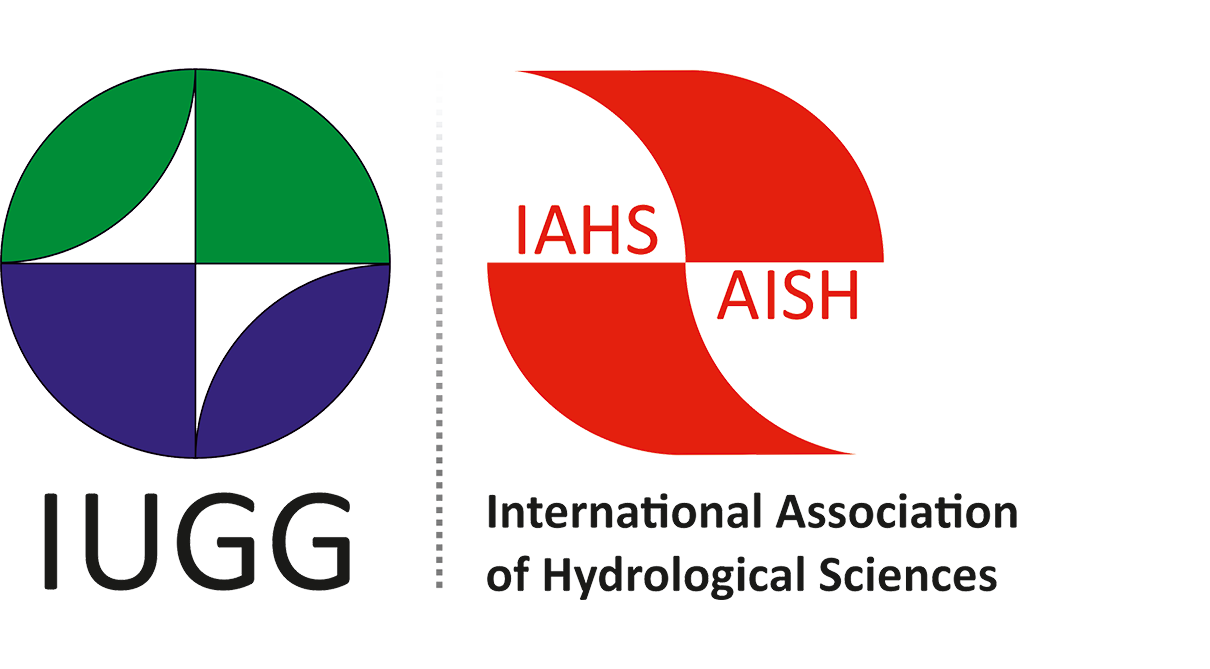Tison Award 2009 / Prix Tison 2009
Presentation of the Tison Award 2009 in Hyderabad (10 September 2009). From left to rigth :
Gordon Young (IAHS President), Shinjiro Kanae, Yukiko Hirabayashi and Zbygnew Kundzewicz (IAHS Editor)
The 2009 Tison Award has been granted to Yukiko Hirabayashi, Shinjiro Kanae and Seita Emori from Japan for their paper
Global projections of changing risks of floods and droughts in a changing climate
co-authored by Taikan Oki and Masahide Kimoto and published in Hydrological Sciences Journal in August 2008.
Citation on the occasion of bestowing the 2009 Tison Award upon Dr Yukiko Hirabayashi, Professor Shinjiro Kanae and Dr Seita Emori
In April 2009, a decision was made by the International Association of Hydrological Sciences (IAHS) jury of the Tison Award to select a paper by Dr Yukiko Hirabayashi and co-authors as the best IAHS publication of young scientists (under 41 years of age). The awarded paper, entitled "Global projections of changing risks of floods and droughts in a changing climate", was published in Hydrological Sciences Journal in the August 2008 issue (volume 53, issue 4). The affiliation of the principal author is the Interdisciplinary Graduate School of Medicine and Engineering, Yamanashi University in Kofu, Japan.
Dr Hirabayashi is the lead author of the awarded publication but the paper is co-authored by four other Japanese scientists: Professor Shinjiro Kanae, Dr Seita Emori, Professor Taikan Oki, and Dr Masahide Kimoto, two of whom are also eligible for the Award, age-wise.
The awarded paper deals with projections of risk of extremely low and high river discharges, under future, changing climate. Projections are based on mathematical modelling with the help of Japanese tools: MIROC GCM (MIROC - Model for Interdisciplinary Research on Climate; GCM - general circulation model / global climate model) and TRIP (Total Runoff Integrating Pathways) for the global runoff network.
The topic of the paper is very timely. In many areas, water-related extremes have already become more frequent and/or more severe in the changing climate and projections are indicating further increase of frequency and severity. Observations of increasing damages generate a lot of interest, and concern. At the same time, there has been a huge uncertainty around the future projections - we know better that, in fact, we know little. Climate models reconstruct only broader aspects of the past and do not fit the ground-truth data for the control period satisfactorily, so they are not really trustworthy as regards a remote future.
The paper maps areas where a 100-year flood in the control period is projected to become more frequent (e.g. 10-year flood) in the future horizon and areas where a 100-year flood becomes less frequent (e.g. 1000-year flood). This is of much relevance and interest for stakeholders and decision makers, despite the high uncertainty.
Dr Hirabayashi is an ambitious and brave lady. She has addressed a very complex topic of extreme flows, where difficulties result, among others, from a multi-factor context and multiple generating mechanisms, and general data scarcity. Indeed, Miss Hirabayashi has embarked upon a "mission: impossible". Many experts say - it is not possible to make meaningful flood and drought risk projections, because models are not good enough yet.
I encourage everyone here to read this paper. I am sure that it will find its way to the IPCC assessments, both the Special Report on Extremes and the Fifth Assessment Report.
It is for the second time that the Tison Award is bestowed upon young Japanese scientists. In 2003, during the IAHS Scientific Assembly in Sapporo, the Tison Award went to Taikan Oki of the University of Tokyo and co-authors. Now, Professor Oki, who also co-authored the awarded paper, is 41+. Hence, he is not eligible for sharing the Tison Award, but there are two other co-authors who are eligible age-wise: Professor Shinjiro Kanae and Dr Seita Emori. Professor Kanae was also among the Tison Award winners in 2003. He has not been the lead author in either 2003 or 2009, but nevertheless he is the first scientist to receive the Tison Award twice.
The honour goes to Japan again, a country that demonstrated a huge progress in global-scale hydrology. There are quite a few young Japanese hydrologists who very skillfully manipulate large global data sets, aptly combining satellite information and results of global mathematical modelling.
The monetary part of the Award is symbolic, 1000 US$, to be divided between three co-authors who are eligible age-wise. But the prestige of the Award extends far beyond the face value. I can tell this first hand, with much confidence, because I was the first recipient of the Tison Award, back in 1987 at the IAHS General Assembly in Vancouver.
Ladies and Gentlemen, please join me in applauding Dr Yukiko Hirabayashi, Professor Shinjiro Kanae and Dr Seita Emori, the laureates of the 2009 Tison Award.
Z. Kundzewicz, IAHS Editor, 10 September 2009
